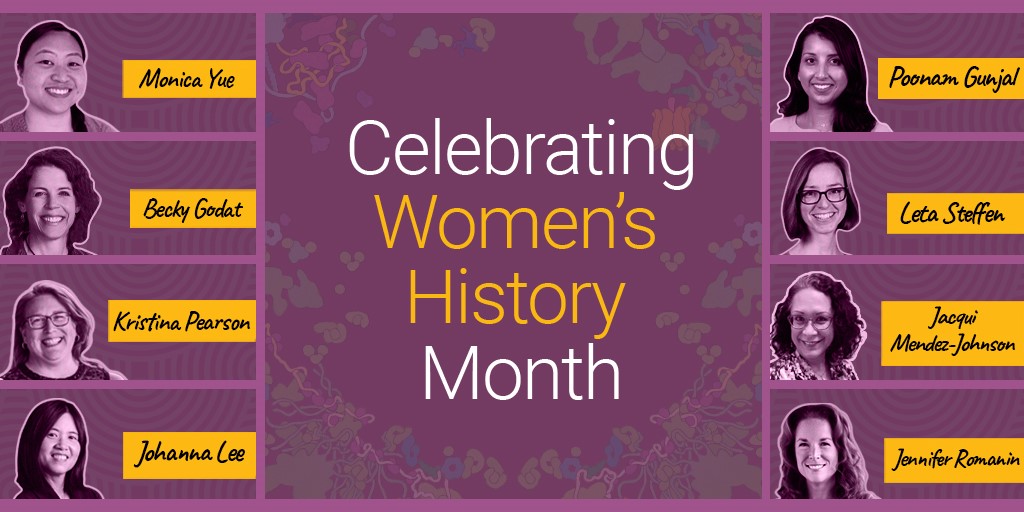Welcome back to Part 2 of our March Women in Science series! In Part 1 of this series, Breaking the Bias: Addressing the STEM Gender Gap, we took a closer look at gender stereotypes and male-dominated culture and their roles as key factors in perpetuating the gender gap in STEM. In this installment, we will be continuing the conversation about the STEM gender gap and focusing on the key issue of fewer female role models in STEM.
Part of my exploration of this topic included having conversations with a handful of my female colleagues at Promega about the about the challenges women in STEM face. These colleagues were (in no particular order): Monica Yue, Technical Services Scientist; Poonam Gunjal, Manager, Regional Sales; Becky Godat, Instrumentation Scientist; Leta Steffen, Supervisor, Scientific Applications; Kris Pearson, Director, Manufacturing & Custom Operations; Jacqui Mendez-Johnson, Quality Assurance Scientist; Johanna Lee, Content Lead, Marketing Services; and Jen Romanin, Sr. Director, IVD Operations and Global Support Services.

What Does A Scientist Look Like?
If someone asked you to draw a scientist, what would that person look like? Over the past 5 decades, this question has been asked of over 20,000 students across all grades from kindergarten through 12th, and evaluated in nearly 80 studies. A meta-analysis of these decades of studies revealed some interesting findings.
Between 1966 and 1977, of the 5,000 drawings collected from students during the original 11-year study, only 28 of those 5,000 drawings (less than 1% of the drawings) depicted a female scientist, with all 28 of them being drawn by girls.
Continue reading “This is What a Scientist Looks Like: The Importance of Female Role Models in STEM”








